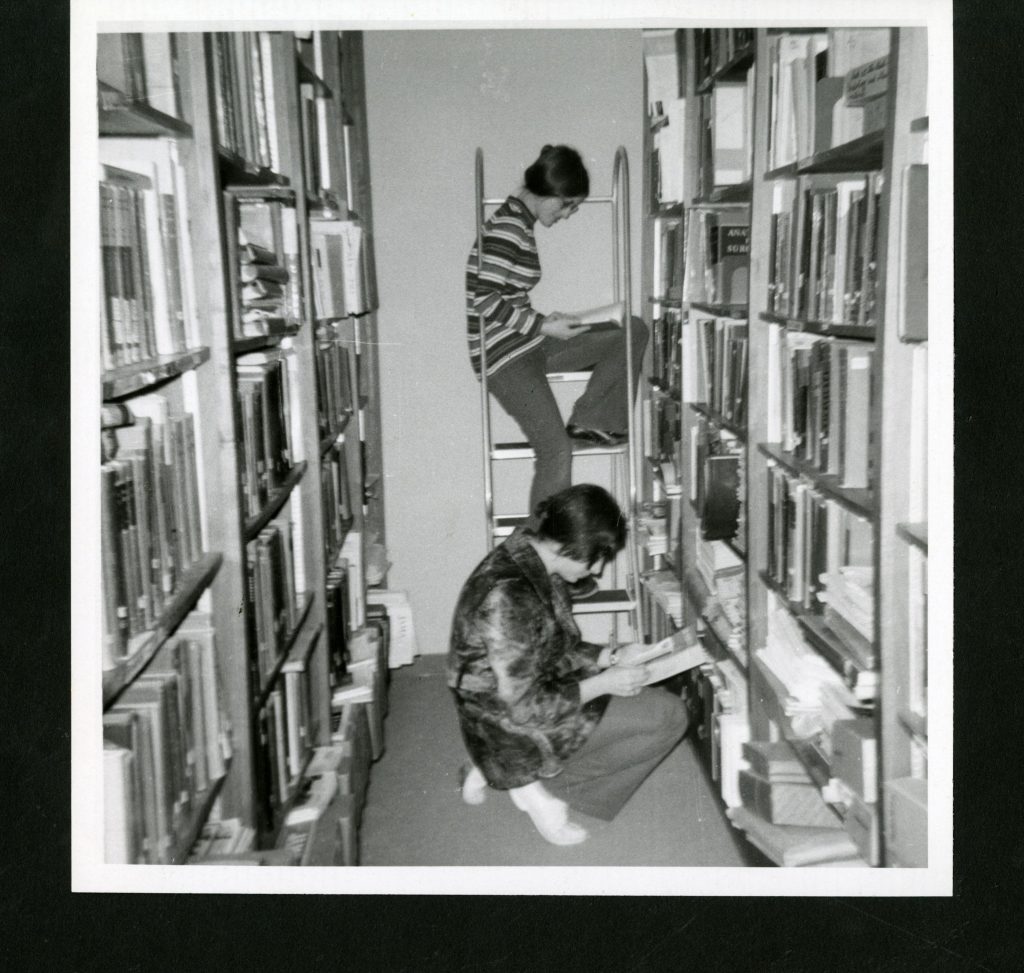Libraries have something to prove
Thinking about future-oriented libraries with sleek exteriors, cutting edge resources and the hottest new books instantly available for reading/listening through an app is exciting, enticing, and well…a little disillusioning. Libraries of all kinds are being hounded by their governing bodies to prove their worth (or else be replaced by Amazon?) and are therefore impressively working to step up their game. But maybe we pause for a moment and ask: What is our goal, as librarians in 2025, aesthetically and programmatically? To look and feel like an Apple Store? One of the inherent goods of the library is that you can go there and you are not encouraged to buy into anything. So why are so many libraries marketing themselves and to who?
Reaching the people
The myth of libraries simply being places full of books is quickly dissipating, and it is high time for communities to see the contemporary purpose of their libraries: communities! This may already be clear to regular library goers but obscure to others in the community who are not familiar with their libraries’ capabilities beyond offering access to books and computers. It is important for library workers administrators to figure out who they are successfully providing services to and who is currently left out. Smith’s (2017) analysis of public library programming in Madison, Wisconsin that was “informed by community input at each step of the process” shows how libraries can adapt to serve historically vulnerable populations and effectively expand their user bases. Whether this is done through moderated discussions with patrons, partnerships with community-based organizations, or having a presence outside of the physical library space, libraries can grow their networks through meaningful service (Muller & Williams, 2021). When I worked in a large urban library system’s outreach services department, many of our program users learned about us out in the community, by word of mouth, or from our organizational partners. These users may not have been traditionally deemed library users, but became loyal patrons through untraditional library engagement efforts.
Slowing the technology
Like many other institutions, libraries are anxious about the onset of AI and how it can be most effectively and ethically harnessed for research, programming, and digital infrastructure. Training on coding, AI prompt writing, and 3D printing are great and useful, but what about providing assistance to community members who do not know how to pay a bill online or book a doctor’s appointment through a website? Within today’s rapidly evolving technology-infused world, “as more people get connected, [we] think everyone is getting connected” (West, 2014). While West’s writing is over ten years old, there still remains no national standard or training for citizens of all ages on digital citizenship. Many of the roadblocks to digital aptitude seem financial/technological, but are actually “human/social.” And that is precisely what libraries are good for: social engagement, skill development, and humanization. Libraries have the unique potential to cast an incredibly wide net, and transform that wide net into an even wider network.

References
Muller, C. and Williams, A. (2021, March 17). Libraries are bridging the digital divide. Internet Society. https://www.internetsociety.org/blog/2021/03/libraries-are-bridging-the-digital-divide/
Smith, C. (2017, June 25). Madison’s library takeover. American Libraries Magazine. https://americanlibrariesmagazine.org/blogs/the-scoop/madisons-library-takeover/?utm_content=buffer8a08c&utm_medium=social&utm_source=facebook.com&utm_campaign=buffer
West, J. (2014). 21st century digital divide. Librarian.net. https://www.librarian.net/talks/rlc14/


